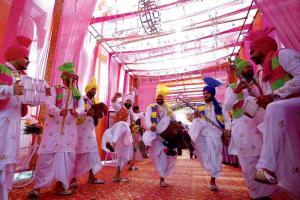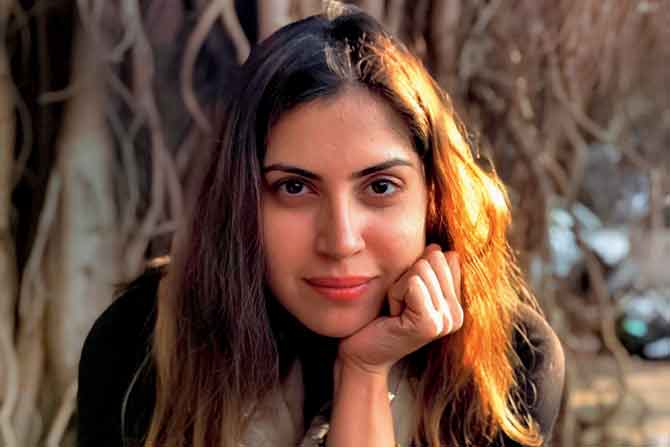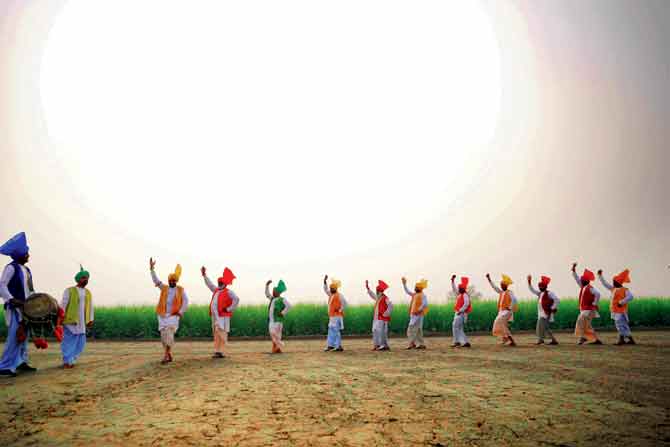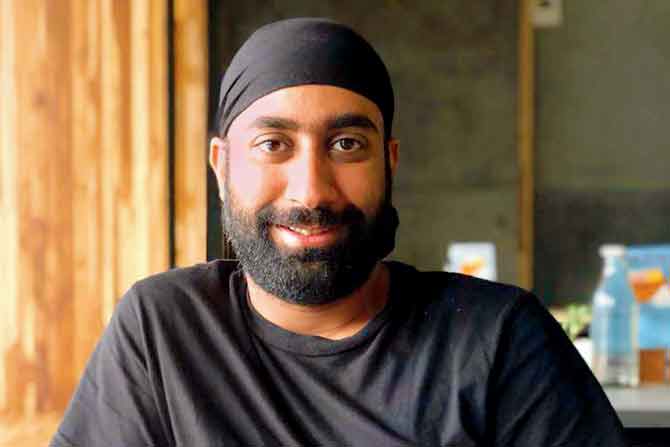A documentary filmmaker travels through the innards of Punjab, including her ancestral village, to trap on film folk dance traditions that are slipping away to time

Rajveer Kaur says Punjab is rich in poetry, dance and literature, and is home to almost 42 folk dances alone
In India, now, it's tough to host a party and not play a Bhangra remix. It can spur the sassiest of guests into getting on their feet, lifting and dropping their shoulders, arms outstretched.
ADVERTISEMENT
Bhangra equals Punjab for most, but the northern state holds within its cultural couldron over 42 folk dance forms. Bhangra, old timers will tell you, is in fact, the youngest.
Rajveer Kaur's upcoming documentary, The Project Punjab, saw its trailer release recently, promising to unearth the little known dances of the state which risk dropping off the map if not documented. Punjab, she says, has been in the news lately for all the wrong reasons. She began work on the project in 2017 after spending six months at her ancestral home in her pind in Usmanpur, Nawanshahr district. "I was there for my sister's wedding. A day before the wedding, we hold a ceremony called jaggo, where the family sets out through the village singing and dancing to announce to the neighbours that a couple is going to wed. No one is allowed to sleep," she says. Keen to plan the ceremony the traditional way, they hired Virasat Kala Kendra members to perform the Malwai giddha. The procession moved through the village to music played using the algoze, chimta, bugchu, sapp and kato. "It raised my curiosity; I began finding out more about other dance forms; many of them already lost," says Kaur.

Rajveer Kaur
From Fazilka, for example, stems the Jhoomar, an extremely graceful, slow and rhythmic dance performed only by men from three generations.
The film's DOP and editor Harshbir Singh Phull remembers the first day of shooting on a foggy, winter night. "There was a contrasting soft touch to the light, which became the backdrop for all the colourful costumes. It was beautiful as we shot the men walking in a parade to the fields," says Phull, who chose not to shoot any performance or interview that was staged. "We wanted to capture them in their element—cracking jokes backstage, putting on their costumes, and show the impact of their performance on the audience and the surroundings."

From Fazilka stems the Jhoomar, an extremely graceful, slow and rhythmic dance performed only by men
The documentary took the pair all over Punjab. In Preet Nagar, 20 km from Lahore, they met Harinder Singh Ji, who started a Punjabi folk dance group that excels in different folk forms including Malwai Giddha, Bhangra and Sammi. Interestingly, he works with a group of specially-abled dancers. "He shared his own story of being a physically disabled dancer from Chandigarh," adds Kaur.

Harshbir Singh Phull
Most Punjabi folk dance forms are performed on songs called Boliyan that express topical, day to day issues, offer ab insight into what life was like back in the day, speak of bossy husbands, nosey families, and celebrations. From showcasing the difference between tumba and tumbi to interviewing a lineage of stalwarts like Gurudev Singh, the grandson of Bhana Ram who displayed dhol for the first time in a Bollywood film for Dilip Kumar's Naya Daur, and Yamla Jatt's grandson Vijay Yamla, the film's first segment will release by the end of this year. "The COVID-19 lockdown has delayed the release. But we know we are on the right track. On the last day of the first schedule, we were to shoot Babeya da giddha in pind Chatta Sekhwan in Sangrur district. While the team was practising and getting ready, we were waiting for Gurucharan Singh Ji, the man who formed the first Babeya da giddha team years ago. Unfortunately, we received news that he had died of old age. It strengthened our belief that this story had to be documented and told to the world."
Catch up on all the latest Mumbai news, crime news, current affairs, and a complete guide from food to things to do and events across Mumbai. Also download the new mid-day Android and iOS apps to get latest updates.
Mid-Day is now on Telegram. Click here to join our channel (@middayinfomedialtd) and stay updated with the latest news
 Subscribe today by clicking the link and stay updated with the latest news!" Click here!
Subscribe today by clicking the link and stay updated with the latest news!" Click here!







